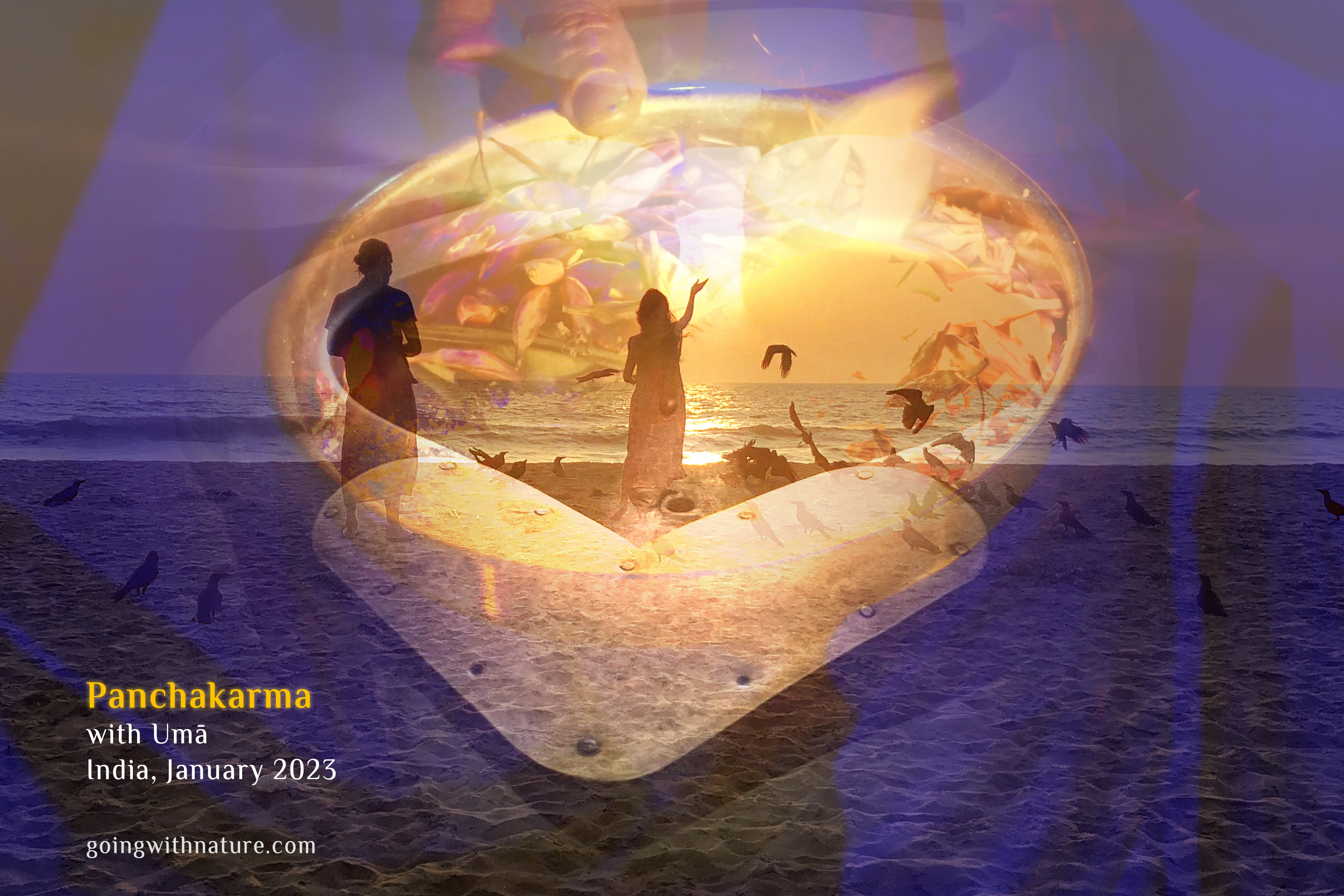Overview of Shodhana and Shamana
Elimination and Palliation Therapies in Panchakarma
.
Panchakarma (meaning five actions) is Ayurveda’s comprehensive system of purificatory and restorative procedures engineered to dislodge and eliminate deep-seated, disease-forming toxins that have accumulated over a lifetime.
.
Panchakarma works to reverse toxic obstruction at the root of compounded disorders—including, but not limited to—disabled elimination, reproduction, digestion, respiration, circulation, disturbed sleep, irregular immune and thyroid functions, allergies, chronic fatigue, cancer, blood and heart diseases, diabetes, rheumatism, arthritis, osteoporosis, psychological distress and other sicknesses common to the modern human condition of restlessness and self-harming lifestyles.
.
Panchakarma therapies work to expose and permanently remove impurities from the body and mind, consequently re-establishing original harmony with natural law whilst strengthening immunity, potency and restoration of “basic, utter contentment.”
.
While Panchakarma is unique to Indian traditional medicine and unparalleled as a curative and rejuvenative solution, it is rooted in universal principles. Panchakarma’s two-fold nature of purification and management is reflective of universal duality that causes us to analyze what we perceive by means of opposing distinctions, such as hot or cold, heavy or light, etc.
.
Likewise, Panchakarma therapies are categorized into two opposing yet complementary functions. These are Shodhana and Shamana. Shodhana is attenuating or lightening (langhana), and shamana is pacifying and bolstering (brmhana).
.
Shodhana, the elimination process, uses langhana therapies to “scrape” and expel the pollutants (vitiated doshas) out of the body tissues, channels, digestive tract, organs, sense organs and mental functions. This is attained by the means of five main actions as prescribed in combination and sequence by the physician, according to constitution, condition and capacity:
- Vamana (emesis)
- Virechana (purgation)
- Basti (enema)
- Nasya (nasal insufflation)
- Raktamokshana (blood-letting)
.
The Panchakarma method uses the shodhana process to liquefy, loosen and mobilize (through sweat therapies) the vitiated doshas (morbid humors) that have spilled out from their original sites. These aggravated doshas circulate and lodge along with heavy, sticky residue of accumulated toxins at the weakened sites prime for disease precipitation.
.
Panchakarma reverses this disease pathway back into the blood and into the hollow gastrointestinal tracts for systematic extraction. Once the expulsion is complete, the shamana (palliative) process restores equilibrium of doshas and heals and rebuilds (bhrmana) weakened tissues, channels and digestive, mental, sensorial and somatic functions.
.
This Ayurvedic system of cellular detoxification and replenishment enables the deep tissue nurturance necessary for long-term integration of all benefits to the whole system.
.
Grounding and protective measures are taken before, during and following the cleansing. The heightened sensitivity of the nervous system is considered throughout the whole process of Panchakarma.
.
The Panchakarma patient will expect to undergo a three-part series of procedures.
- Purva Karma – Pre-cleanse
- Panchakarma – Main purificatory procedures
- Paschat karma – Post procedure care inclusive of diet, herbal aphrodisiacs/rejuvenatives, preventative self-care
.
To reap the fruit of Panchakarma, which you may experience as a centered, full-bodied sense of spiritual expansion sustained through fundamental, integral wellbeing, here are the guidelines to be followed throughout all steps of the process.
.



